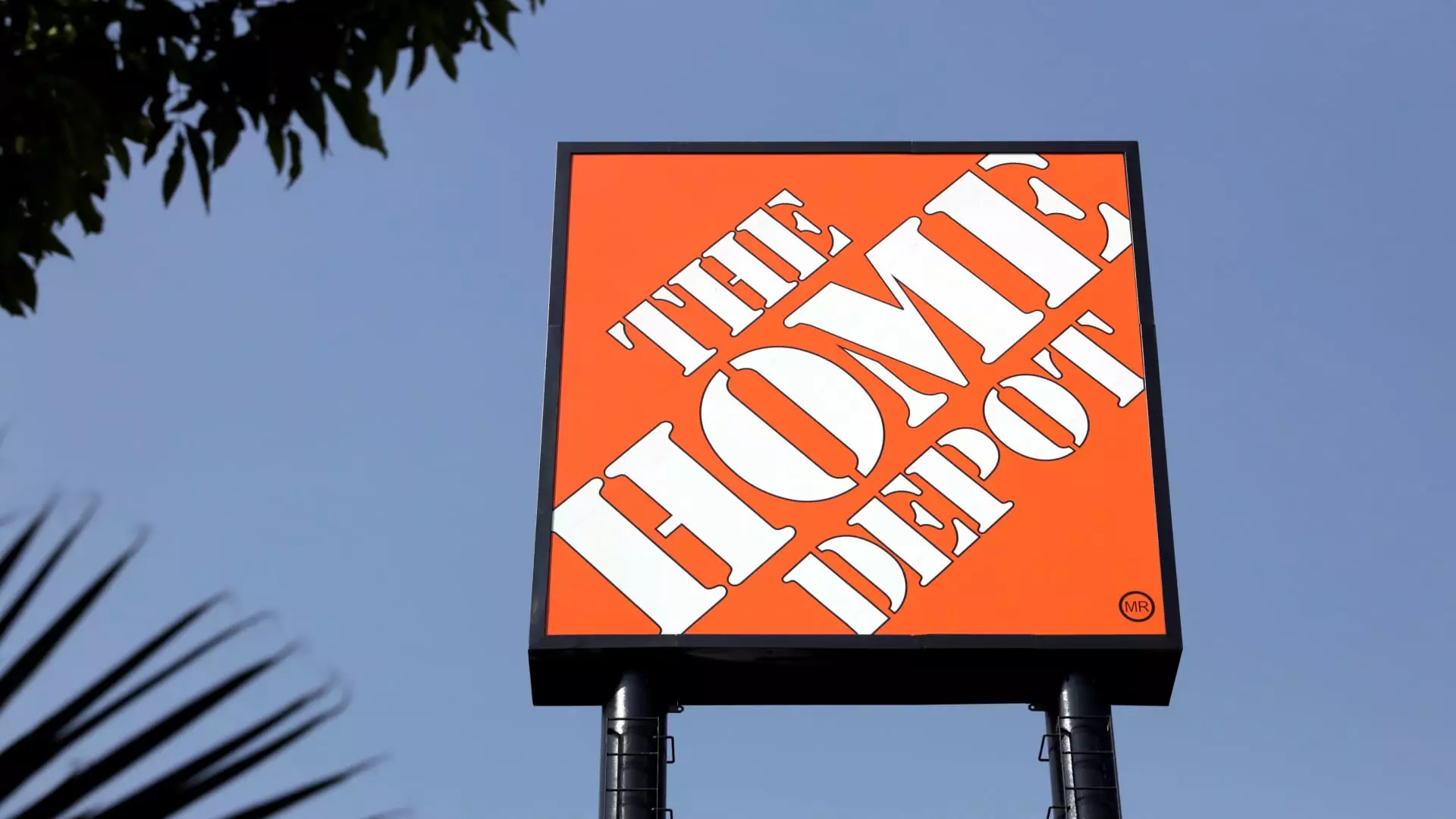Home Depot, a staple in the home improvement industry, recently unveiled its quarterly sales figures, demonstrating a noteworthy increase of over 6% year-over-year. This growth comes amidst a blend of strategic acquisitions, natural disaster response, and favorable weather conditions that have collectively driven demand for various home improvement supplies. However, while the financial outlook appears optimistic on the surface, it is important to dissect the underlying factors contributing to these results and understand the broader market implications.
One significant aspect of Home Depot’s performance is its recent acquisition of SRS Distribution, a major supplier for professionals in the roofing, landscaping, and pool sectors. This strategic move has bolstered Home Depot’s overall sales, with the company revising its full-year sales growth forecast upwards to approximately 4%, a notable improvement from its initial estimate of 2.5% to 3.5%. The inclusion of SRS Distribution is projected to add about $6.4 billion to Home Depot’s revenue, demonstrating the company’s focus on enhancing its service offerings for professional customers.
Nonetheless, while acquisitions can drive sales growth, they often come with integration challenges. Home Depot’s ability to seamlessly incorporate SRS into its operations will be critical in ensuring sustained growth and customer satisfaction. Analysts and investors will be closely monitoring how well the company adapts to this new business model and whether it can leverage its expanded market reach effectively.
Home Depot’s performance this quarter has also received a boost from favorable weather, which extended the summer season and increased the demand for seasonal items. The aftermath of recent hurricanes—particularly Hurricanes Helene and Milton—has resulted in a surge in sales related to preparations and repairs, resulting in a minor yet impactful contribution to the company’s overall sales growth. Customers flocked to purchase generators, building materials, and other supplies necessary for home repairs.
However, relying on weather patterns for business growth can be precarious. Severe weather events can have both positive and negative implications for the retail industry. While they can temporarily boost sales, they may also deter consumer activity due to concerns about safety or economic instability, creating an unpredictable operating environment. It raises the question of whether Home Depot can sustain this boost into the next quarter and beyond.
Despite the positive sales growth, Chief Financial Officer Richard McPhail pointed out that consumer behavior remains cautious overall. Many customers are deferring home improvement projects as they wait for more favorable mortgage rates and to navigate prevailing economic uncertainties. This hesitance, despite consumers being in a generally stable financial position, indicates a complex psychological landscape where homeowners are prioritizing financial security over discretionary spending.
The indication of pent-up demand for home projects suggests that once consumers feel confident to proceed, there could be a substantial surge in sales. However, the timeline for this shift remains uncertain, leaving Home Depot, along with other retailers, in a waiting game, attempting to predict when this latent demand will be activated in a more concrete manner.
Home Depot’s financial metrics also highlight the influence of broader economic trends. The company saw a decrease in net income for the fiscal third quarter, a decline attributed to various lingering economic pressures, including inflation and higher interest rates that have slowed housing turnover. These conditions have contributed to persistent challenges in maintaining robust comparable sales growth, marking the eighth consecutive quarter with negative comparable sales figures.
However, despite these challenges, Home Depot’s stock has seen an uptick of about 18% year-to-date, an impressive achievement, especially considering that the overall market has been relatively volatile. The company’s ability to maintain investor confidence amidst these challenges speaks to its strong brand presence and market position. As economic conditions fluctuate, how Home Depot navigates these changes will ultimately affect its stock performance and investor sentiment.
Looking Forward: Uncertain Opportunities
As Home Depot proceeds into the holiday season and the new fiscal year, it faces both opportunities and potential pitfalls. The upcoming holiday shopping period could spur increased sales, particularly with popular seasonal items like artificial Christmas trees and striking outdoor decor. However, external factors, including potential tariffs and shifts in consumer behavior, loom large over its continuance of growth.
While Home Depot’s recent performance demonstrates resilience and strategic growth through acquisitions, the company must maneuver cautiously within an uncertain economic landscape. Understanding and adapting to consumer sentiments, weather dependencies, and potential geopolitical downturns will be integral as it seeks to establish sustainable growth for the future. The key question remains: how will Home Depot unlock the pent-up demand within a cautious consumer base amid fluctuating economic circumstances?

